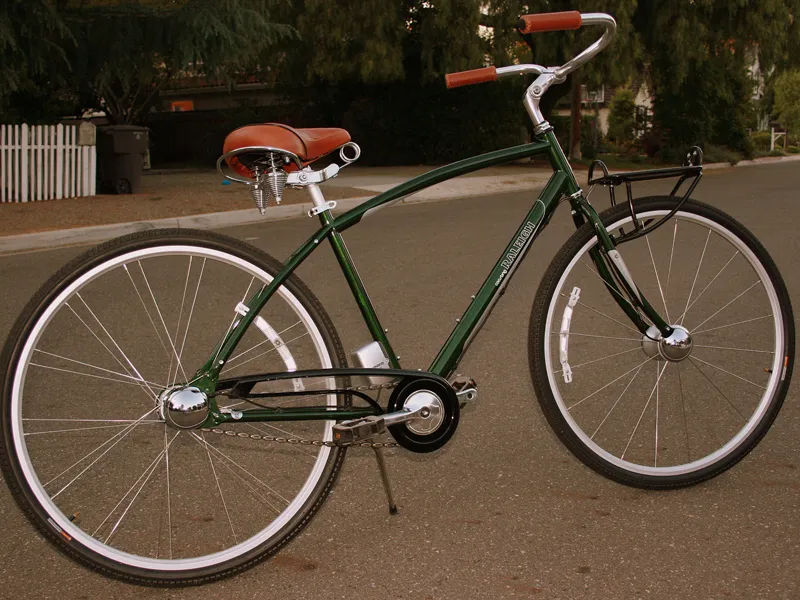When I worked for Airborne/Huffy in the late nineties, Shimano invited its bigger accounts to a private meeting in Las Vegas' Belagio hotel during the Interbike Show. There, we discussed integrated and simple bicycle designs. Shimano was picking the big boys' brains to determine what the next trend might be, despite the company's sheer dominance of virtually every category. Progressive thinking leads to progressive products, and it was fun to be invited to the table.
Fast forward to Interbike 2006: Shimano introduced its Coasting platform, based on a simple notion that too many Americans were forgoing the joys of bicycling for pleasure, and with gas prices rising and millions of baby boomers for the taking, the time was ripe to introduce simple cycling to the masses. Three major players, Trek, Giant and Raleigh, gave the world a peek at new models based on the automatic shifting-engineered Coasting group. Of the three models, the Trek Lime, Giant Suede and Raleigh Coasting, I requested some time on the Raleigh.
BACKGROUND >Some may be familiar with Shimano's Auto-D system introduced in 1999, or remember the LandRider autoshift bike from infomercials. Shimano was more interested in taking bicycling to the next level, using the "less is more" ideology. The Shimano Coasting group concept gets to the heart of where most fair-weather riders enjoy riding: bare-bones visuals with simple internals, hence Shimano's approach with a coaster brake at the back only. No brake levers, no shift levers, no derailleurs, just a front dynamo-hub generated internal three speed. Shimano worked with IDEO, a Palo Alto, California design firm, to engineer the concept into a tidy, futuristic and unique product, one that would also fit an overall complete bike price point starting at $400US. Of the three companies, Raleigh has the deepest heritage, and the Raleigh Coasting model reflected this, starting with its Black Forest Green paint, tan padded mattress saddle, and heron head badge.

VERDICT >True to form, the maiden voyage was different. Not knowing what to expect, I swung my leg over the saddle, pushed off down the road, and within 20 yards felt the automatic shifting doing its job. The central component of the drivetrain, an enclosed plastic box mounted to the lower seat tube, acts as the brain, sending commands to the rear hub's internal mechanism. The front hub's dynamo charge is connected to the brain via simple cabling, as is the brain to the rear hub. Shifting occurs based on your RPMs.
The bars arch back nicely on the hands, and the reach is about right. Because this is a price-point exercise in product development, there's truly nothing special about the quality, with a high-tensile steel frame and fork. The smart choice was going with 700c diameter wheels versus the smaller 26-inch. Even the chain is a newly-engineered component, whirling silently under the matching Black Forest Green chainguard.

Several able-bodied folks enjoyed saddle time on the Raleigh, including seasoned commuters and teenagers. One only needs to get used to braking at the cranks versus grabbing a handful of lever. The quick-release seat clamp is a nice touch. Simple touches like a kickstand and useful front rack rounded out a smart new ride for a new generation of bicyclists.

The only drawback I see to the Coasting concept is the need to use a 10mm hex wrench to remove the wheels. Sure, IDEO did a great job, but it's a bit of a stretch to think most people want to lug around a hard-to-find tool if they get a puncture. Granted, the same could be said for the 15- and 14mm bolts found on similarly priced cruisers, so it may just be nitpicking on my part. Catering to the newbies will take more simplistic engineering, which has always been the challenge. > >Price: $400US and up. Sizes: men's and women's. Links: Coasting, Raleigh US and Raleigh UK.
> >
>

